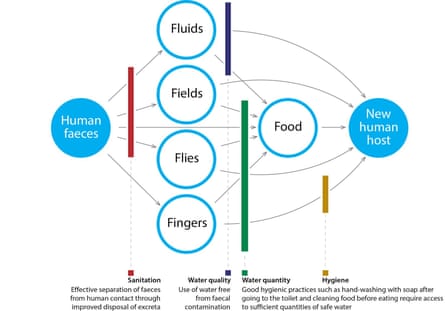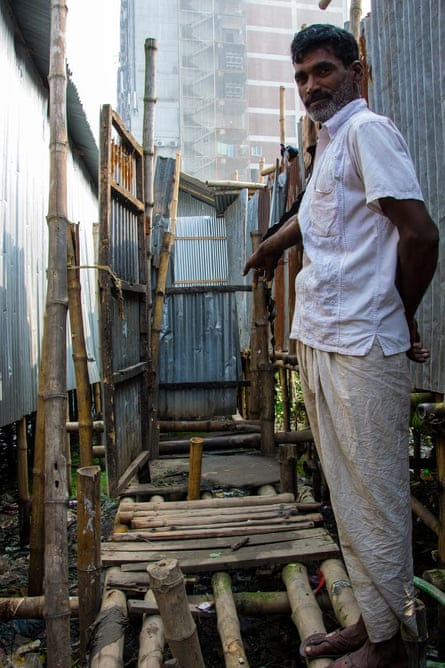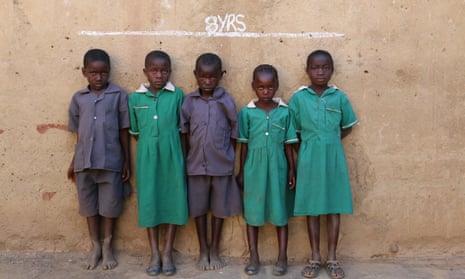At the start of this year, the UN recognised sanitation as a universal human right. The Sustainable Development Goals aim to achieve global sanitation by 2030. But despite these grand ambitions, and a hard-working WASH (Water, Sanitation and Hygiene) development sector, 2.4 billion people around the world still don’t have access to a proper toilet.
When we think of poor sanitation, thoughts usually turn to diarrhoea. If you start off healthy, and have the means to prevent dehydration, it’s not usually life threatening. But more than half a million under fives died from diarrhoea in 2013, with around 314,000 deaths directly attributable to poor WASH. And for people continuously exposed to a faecally-contaminated environment, the lack of a toilet can have far-reaching effects.
TOILET = GROW TALLER + THINK BETTER
Recent research has highlighted an indisputable link between toilets, malnutrition and irreversible stunting.
Malnutrition isn’t simply to do with a lack of food – it’s net nutrition that’s key, with access to nutritious food offset against losses to disease, and impairment in the ability to absorb nutrients.
The World Health Organisation estimates that 50% of cases of malnutrition in the world are due to repeated bouts of diarrhoea or intestinal worm infections caused by inadequate water and sanitation provision. Just five cases of severe diarrhoea in the first two years of a child’s life can result in stunting – short height for age – which is a measure for overall health. Stunting is largely irreversible after the age of two, and results in reduced lifelong immune capacity, retarded cognitive and emotional development, and poor physical health.
In 2014, 61.6 million people were treated for schistosomiasis, caused by parasitic flatworms (schistosomes). Estimates suggest an additional 258 million needed, but didn’t get, preventative treatment. Larvae burrow in through the skin of human hosts exposed to contaminated water when wading, swimming or washing. Once inside the body, the larvae mature to fully-grown worms which can release eggs for several years. Worm infestation inhibits growth and health, including impaired memory, cognition and immune function – together with an increased risk of contracting HIV. Eggs within the body’s cells cause the greatest damage, including lesions and haemorrhage in intestinal and blood cells, infertility, and permanent nerve and organ damage. Other eggs are passed back out in urine and faeces: if poor sanitation means egg-infested human waste ends up back in freshwater, the life cycle starts again.
Roundworms have a simpler lifecycle, passing from the faeces of one host into the gut of the next – through contaminated food or water, dirty (read, poo-ey) fingers, or contaminated soil. The impact on the individual – stunting, cognitive impairment and physical ill-health – remains. With a global disease burden greater than that of malaria or tuberculosis, worm infestation has been described as the greatest neglected tropical disease.
Contaminated food, water and living spaces can also cause a condition called environmental enteropathy – disease of the intestine caused by chronic exposure to faecal pathogens. This exposure is often sub-clinical – from the outside, it looks like the locals are coping with dirty water and dodgy hygiene conditions. But successive waves of immune response and inflammation ultimately damage the gut lining, compromising absorption and making it more porous, allowing more pathogens to enter the bloodstream – an even greater disease burden. Energy is repeatedly diverted from growth to fighting infection.
The impacts can be measured intergenerationally. Maternal malnutrition increases risk in utero and during labour, compromises the nutritional benefits of breastfeeding, and perhaps predictably, often leads to stunted infants.
The “F-Diagram” illustrates the faecal-oral route of disease transmission, and how adequate WASH can prevent it. Fingers, feet, flies, fluids and fields transfer faecal matter to food and water. The bottom line: when you get sick, it’s because you’ve been eating crap.

SANITATION IS BINARY
For sanitation to be effective, the whole community must be included. A few individuals defecating in the open means that everyone continues to be exposed to faecal pathogens. In terms of success, it’s all or nothing.
Basic, effective sanitation in rural areas requires nothing more complex than a safe and hygienic pit latrine and handwashing with soap and clean water. The latrine needs to be dug in a place where waste will be safely contained (no run-off during the monsoon, no seepage into ground water). People need to be able to use the latrine without falling in, or dirtying their feet or the area directly around the pit. The pit needs to be covered when not in use, to prevent flies transferring faecal matter out into the wider environment. And there needs to be the means to seal the pit once full, with space to dig a new pit. Hand washing requires soap, a supply of water and a simple lesson in how to do it properly.

The challenges are more complex in urban areas. 54% of the world’s population – 3.9 billion people – now live in towns or cities. By 2050, it’ll be almost 70%. Urban migrants in developing countries often end up in overcrowded slums with poor or non-existent sanitation services. Millions of people simply watch their faeces collecting below, or around, an inadequate latrine. Attempting to retrofit sewers in megacities is nigh-on impossible, and many developing countries don’t have the resources to contemplate toilets that use potable water to remove waste. Emptying septic tanks and pit latrines with specialised vacuum trucks is feasible, but inefficient and costly.
And the challenge remains about what to do with the waste, or “faecal sludge”, to give it its official name, once it’s moved out of the toilet. In Dhaka, Bangladesh, home to over 15 million people, there’s one wastewater treatment plant. For comparison, there are 350 treatment plants in London and the Thames Valley alone. Faecal sludge management is a massive engineering challenge facing the developing world.
The ultimate aim is to invent a toilet technology that doesn’t require sewers or water for flushing, and doesn’t need to be emptied of raw waste. The Bill and Melinda Gates Foundation issued a challenge in 2010 to do just that: reinvent the toilet. The winners created units that remove pathogens and extract useable materials like clean water and biofuel, or generate electricity or hydrogen. The toilets are currently undergoing field trials.
Putting the human cost to one side, the economic argument for better sanitation speaks for itself. Poor sanitation practices cost India US$53bn a year in economic losses (preventable death and disease, lost productivity, impaired educational achievement and lost tourism revenue). Estimates for 2014 put global economic losses associated with inadequate WASH at around US$260bn, almost double the net global overseas development aid budget of US$135bn.
Sanitation is the overlooked link between education, economics and health in the developing world. To tackle the crisis, a transdisciplinary approach is essential. Without that, we’re all in the crapper.
For more information on global prjects and ways in which you can help, visit: www.toilettwinning.org, www.wateraid.org and www.sanitationfirst.org

Comments (…)
Sign in or create your Guardian account to join the discussion